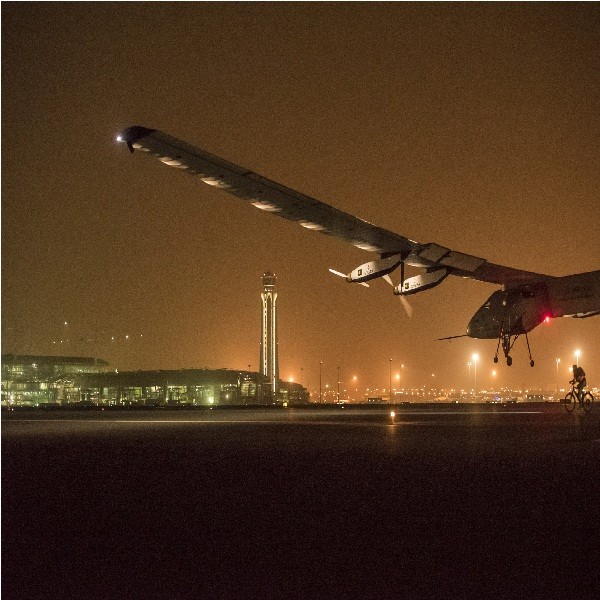The attempt to circle the world in a solar-powered plane has already commenced and the aircraft dubbed only as Solar Impulse 2 has already reached its first destination.
The solar-powered aircraft took off at Abu Dhabi and reached its first destination in Oman after a 12-hour flight. The aircraft is piloted by business man Andre Borschbeg. The Solar Impulse 2 will try to set the record for the first ever solar-powered aircraft to circle the Earth within the next five months.
The plotted course of the journey will span three continents and at least seven countries.
The Solar Impulse project has already broken many world records including one the widely publicized transit of the United States back in 2013. However, the round-the-world journey requires a more powerful plane and this is what urged the construction of the Solar Impulse 2.
The new model of the aircraft has a wingspan of 72 meters which is much wider compared to the wingspan of a standard 747 jumbo jet, according to Ars Technica. Contrary to its increased wingspan, the Solar Impulse 2 only weight 2.3 tons. Experts behind the project says that the aircrafts weight play a critical role in its overall success.
On top of its weight, the Solar Impulse 2 also relies on its 17,000 solar cells located on top of its wings to provide it with enough power to complete the epic journey. The aircraft is also equipped with an energy-dense lithium-ion battery that will help it during night-time flying.
Based on the presented course by the Solar Impulse team, in order to achieve the feat, the aircraft has to cross two of the biggest oceans in the world, the Pacific and Atlantic Ocean. Analysts say that the ocean crossing is the most dangerous and critical part of the flight with estimated flight time of five days and five nights without landing.
According to experts, the ocean crossing is no doubt difficult but at the same time very feasible. The success of the ocean crossing leg of the journey will rely mostly on good weather condition, according to BBC.



























